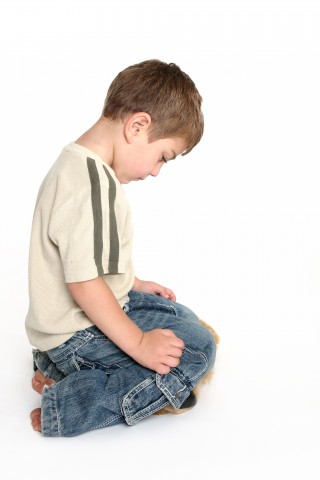
Have you ever heard of Albert Mehrabian’s famous “7%-38%-55% Rule“? According to this rule, tones of voice and body language account for 38% and 55% of personal communication respectively, with words taking up the remaining 7%. Non-verbal language is truly the key to successful communication. Therefore, in addition to teaching you new Cantonese words and phrases here at CantoneseClass101.com, we’re here to teach you the common Hong Kong body gestures to help you better communicate with locals! Truly, Cantonese nonverbal communication is just as important, if not more so, as the words you speak.
We’re introducing four different types of body gestures here, namely:
- Body Posture
- Hand Gestures
- Facial Expressions
- Physical Movement
To help you better master this nonverbal communication in Hong Kong, we’ve also included photos/videos and examples below. Let’s start now! Start with a bonus, and download your FREE cheat sheet – How to Improve Your Cantonese Skills! (Logged-In Member Only)
- Body Posture
- Hand Gestures
- Facial Expressions
- Physical Movement
- Gestures You should Avoid
- Bonus: How to Count Numbers in Hong Kong
- Conclusion: How CantoneseClass101 can Help You Learn More Cantonese
1. Body Posture
1- Defensive
- How: Cross your arms across your chest.
- When: To express distrust or that you’re unengaged; to tell someone that you’re annoyed or offended
- Example: If someone has been talking about something uninteresting for a long time and you want to subtly let him or her know, you can cross your arms.
- Notes: It’s best not to use this posture in business settings as crossing your arms is considered a negative and unprofessional posture.
2. Hand Gestures
1- Good
- How: Thumbs-up (think of the “like” button on Facebook); one hand only (can be left or right)
- When: To show that you think something is excellent, the best, or super good
- Example: When your friend makes an excellent suggestion on what to do this weekend, you can simply give him or her a thumbs-up to show that you like the idea.
- Notes: It’s a widely used positive hand gesture in Hong Kong, both in business and casual settings.
2- OK
- How: Make a circle with your thumb and index finger; the three fingers left should remain upright; one hand only (can be left or right)
- When: To show approval; to express that everything is going smoothly and is fine; to express “yes” or “well understood”
- Example: When you’re asked to do laundry, you can give an “OK” hand gesture to signal that you’ll do it.
- Notes: It’s a very common hand gesture in Hong Kong, whether in the workplace, school, or among friends and family.
3- Bad
- How: Thumbs-down; one hand only (can be left or right)
- When: To express dissatisfaction; to tell people that something’s not good or is of low quality
- Example: If your kid broke your phone, you may show him a “bad” hand gesture to let him or her know that this is defintely not good.
- Notes: This is less common than the “good” and “OK” hand gestures, as it’s best in general to avoid negative gestures.
4- Fist and Palm Salute
- How:
Male: right-hand half-fist, then hold the right hand in front of your chest with your left hand
Female: left-hand half-fist, then hold the left hand in front of your chest with your right hand - When: To congratulate someone; to wish someone luck
- Example: When you visit a friend in Hong Kong during the Chinese New Year, you can first say to him 恭喜發財 (Pronunciation: gung1 hei2 faat3 coi4) meaning “May you have a prosperous New Year,” and then perform this gesture.
- Notes: This hand gesture is mostly used during celebrations, such as Chinese New Year and weddings.
5- Thank You (Restaurant Only)
- How: Tap your fingers several times by your cup
- When: To say thank you when someone’s pouring tea for you at a Chinese restaurant
- Example: If your friends are pouring tea for you during yum cha, you can simply tap your fingers several times by your cup as a means of thanking them.
- Notes: This should only be used in Chinese restaurants (dim sum place). If you want to know more about this unique and funny hand gesture in Hong Kong, visit the Loop.
3. Facial Expressions
1- Respect / Submission
- How: Lower your eyes
- When: To show someone that you respect or obey him or her
- Example: If your boss is angry and you think it’s wiser to be (or pretend to be) obedient, you can lower your eyes when he or she is facing you.
- Notes: When you’re greeting someone older than you that you’re not very close with, you may also want to lower your eyes to show respect. Eye contact meaning in Hong Kong has a lot to do with respect.
4. Physical Movement
When it comes to body gestures in Hong Kong culture, note that even though it’s typical in Hong Kong to stand close to each other during conversations, body contact doesn’t occur. Being touchy isn’t part of the Hong Kong culture. You’ll be seen as rude and impolite if you excessively touch another person during a conversation in Hong Kong.
Avoid hugging or kissing another person, or patting someone on the back. This is especially true if you’re interacting with someone older than you or someone in a position of authority—it will be perceived as offensive and rude. Hugging and kissing are quite rare, even if it’s when running into a close friend. Nodding your head is the most common way to quickly greet someone, and an acceptable Hong Kong body gesture to a close friend is a little pat on the arm.
1- Hello (Business Settings)
- How: A little handshake
- When: To greet someone, usually in business settings
- Example: You can give a little handshake when you’re first introduced to a colleague.
- Notes: This is usually used in business settings or for people we’re not close with. There isn’t any typical body gesture for greetings with friends.
2- Beg / Pray
- How: Kneel down with both feet on the ground
- When: To beg for something; to pray
- Example: If you’ve made a terrible mistake, you can kneel down to beg for forgiveness.
- Notes: This gesture signifies a huge degree of submission. Avoid using it unless you’re praying or you really need to beg for something.
3- Respect
- How: Use both hands to hand over or receive something from someone
- When: To hand over something; to present a gift; to receive something
- Example: During a gift exchange session in a Christmas party, hand the present you’ve carefully prepared to your friends with both hands.
- Notes: You should always hand over or receive things with both hands; using one hand is considered rude and impolite.
5. Gestures You should Avoid
Here’s an all-important list of Hong Kong body gestures that are considered rude, which you should avoid as much as possible!
1- Pointing to Someone with only Your Index Finger
- When: To refer to someone
- Notes: This is considered disrespectful and impolite; you should keep your hand open if you want to refer to someone.
2- Keep Only Your Middle Finger Up
- When: To express anger or frustration; equal to foul language
- Notes: This is very disrespectful and impolite.
3- Winking Your Eyes at Someone
- When: To flirt; to show disrespect
- Notes: Winking your eyes in Hong Kong doesn’t look cool; instead it’s a sign of disrespect and should be avoided.
4- Crossing Your Leg over the Knee and Pointing Your Foot in Someone Else’s Direction
- When: To demonstrate superiority; to slight someone
- Notes: It’s impolite and should be avoided in most situations.
6. Bonus: How to Count Numbers in Hong Kong
- One = Hold only the index finger upright.
- Two = Add the middle finger to the index finger. This is also a common hand gesture used when posing for a picture.
- Three = Same as “OK.” Make a circle with your thumb and index finger; the three fingers left should remain upright.
- Four = Keep all four fingers up with the thumb folded in.
- Five = Open your palm when all fingers are up.
- Six = Curl in your index, middle, and ring fingers only, to indicate six.
- Seven = Keep your thumb and index finger outstretched; pointing down looks like a number seven.
- Eight = Add your middle finger to the number seven sign and point up.
- Nine = Bend the index finger like a hook with other fingers closed.
- Ten = Open the palm of both hands as two 5s gives you ten. You can also make a cross using only your index fingers.
7. Conclusion: How CantoneseClass101 can Help You Learn More Cantonese
After mastering the common Hong Kong body gestures, it’s time to learn more Cantonese to make sure that you can communicate in Hong Kong with the correct verbal and non-verbal languages. With CantoneseClass101.com, you can have your daily dose of Cantonese whenever and wherever you want, either through your mobile apps, desktop software, or even our website. We offer entertaining, engaging, and effective lessons on various aspects of the Cantonese language and culture.
We’ve delivered until now more than 750,000,000 lessons to thousands of happy students from all around the globe. You can learn Cantonese with over 1060 audio and video lessons delivered by our knowledgeable and energetic hosts, detailed PDF lesson notes, abundance of vocabulary learning tools and spaced repetition flashcards, and a lively community to discuss the lessons with fellow learners. What’re you waiting for? Download our lessons, enjoy our audio and video files, and start learning now! Start with a bonus, and download your FREE cheat sheet – How to Improve Your Cantonese Skills! (Logged-In Member Only)























